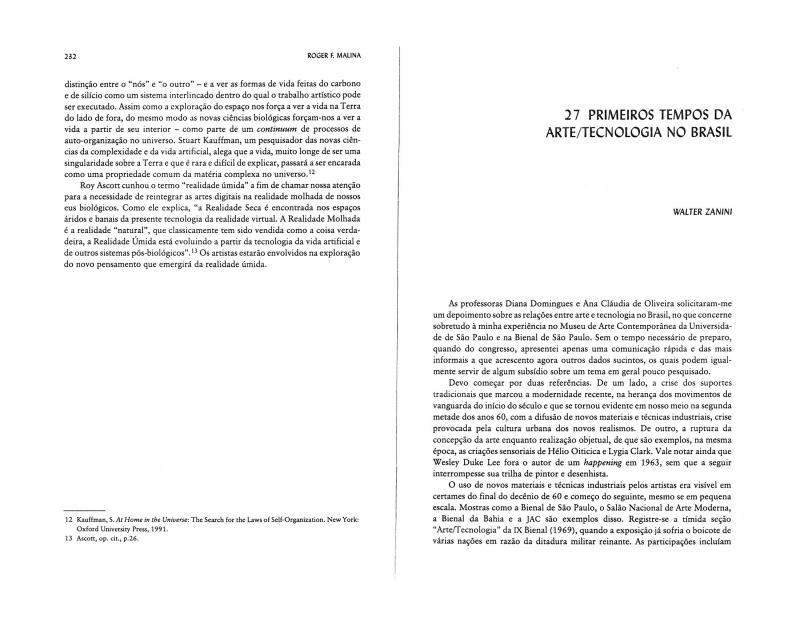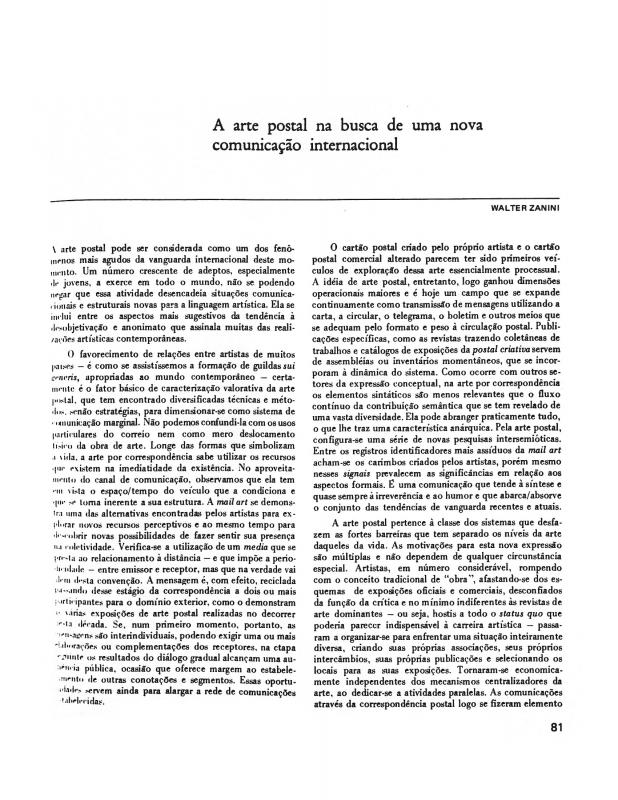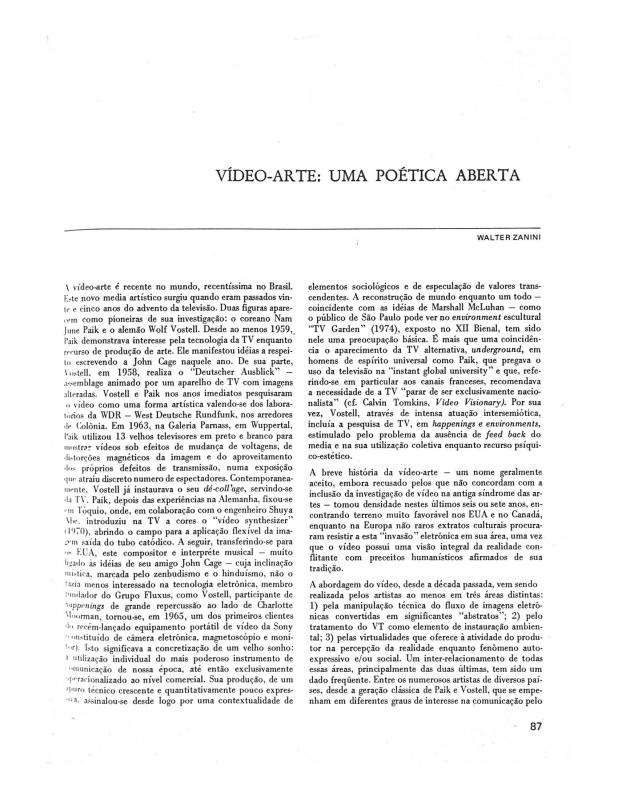The XVI Biennial in Sao Paulo introduced a new organizational structure for this international event, with a focus on the role of the curator. The professor and art critic Walter Zanini took charge of the XVI Bienal de São Paulo in 1981, following his notable performance as director of the MAC-USP (Museu de Arte Contemporânea da Universidade de São Paulo) from 1963 to 1978. At this event, contemporary artists not only presented works on Xerox, and performance and installation art; they also, for the first time, had access to the necessary equipment to show video art as well. The section called Arte Incomum [Unusual Art] was highly praised by the critics; the most outstanding works in this category were by the artist Antônio Batista de Souza (known as Antônio Poteiro) and the French mailman Facteur Cheval. The Mário Pedrosa Prize (named after the well-known art critic and theoretician, recently deceased) was created for this edition of the biennial to recognize a Latin American artist’s body of work.
The critic, curator, and art historian Walter Zanini (1925–2013) is both a theoretician (who keeps an eye on how technology impacts art) and an active commentator who promotes activities and radical changes of this nature through the cultural institutions he directs. During his time at the MAC-USP he did a great deal to encourage the work of new artists and marginalized groups. He was also one of the curators at the Primera Bienal de São Paulo (1951). In the 1970s—with the help of the Spanish artist Julio Plaza (1938–2003), who was from Madrid but had settled in Brazil and was a professor at the Departamento de Multimedios at the UNICamp and at the Departamento de Artes Plásticas da ECA-USP—Zanini helped to expose the work of artists who were involved in experimentation and in the conceptual use of multimedia.
For additional information, see by Zanini “Primeiros tempos da arte/tecnologia no Brasil” [doc. no. 1111029]. Zanini also wrote about mail-art in “A arte postal na busca de uma nova comunicação internacional” [doc. no. 1110591], and about video art in “Vídeo-arte: uma poética aberta” [doc. # 1110892].



